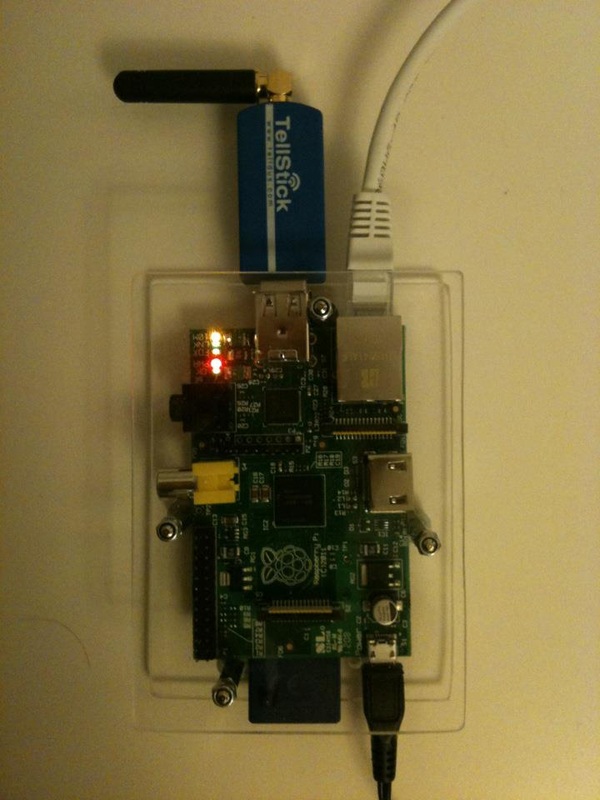*** EDIT: New release that fixes some of the annoying stuff is planed, might happen tonight (june 26) or latest on friday night (depends on how well the kids sleep tonight) ***Despite my comment on last post I found one of the two bugs I wanted to solve and the other one seems to be handled in general by the Raspberry Pi kernel developers. So here is the link to download the image.
https://docs.google.com/open?id=0B-f4Kwg5BylTZmxGM2dvQUNhU3MJust download and make a 4 GB (or larger SD card).
Then boot your Raspberry Pi and point your browser at it.
All configuration is handled in the Administrative interface that has a link at the bottom of the page, here you can add or remove devices and that is automaticly updated in tellstick.conf (need reboot to take effect). User is allways pi with password raspberry.
If you already have a tellstick.conf copy that to /etc/tellstick.conf, do sudo chmod 666 /etc/tellstick.conf and then point your broser to http://[rpi ip adress]/read_config/
Start by going to the administrative interface and into Raw Devices. This is where you should configure everything similar to what goes into tellstick.conf - your actually hardware switches. Unfortunatly you need a reboot before changes take effect. (on my todo list).
When you have done the Raw Device configuration and rebooted you can play around with the switches from the main page http://[rpi ip adress]/ .
Now you can start creating more complex devices. The following exist:
Group Device - Several devices are done at the same time. Capabilites should be ON/OFF and if all sub devices support DIM that could also be set. Example is to use this for whole house off.
Preset Device - Make several devices configured in a certain way. This is per device independent command so one device could be DIM and other could be ON and OFF. Example is to use this for "Movie time". Capabilities should always be Activate and nothing else.
Timer Device - Make a command a defined number of minutes into the future. Capabilities should always be Activate and nothing else.
Please note that all complex devices can act on all other Devices so a Timer Device could trigger a Preset Device that in turns trigger a Group Device. But make sure that there is no "ring" configured this will probably crash the system because of infinite recursion.
All devices share a couple of settings these are:
Name - Used in the administrative interface to identify it
HtmlText - Used for html rendering of the name.
Order - When the device listing is presented it is sorted by Order so if you want to rearrange the listing change number here.
Activate/OnOff/Dim - Capabilites, this is on my todo list to remove as user input. It controls how the device is presented.
Hidden - Not supported yet, have it not set.
Scheduled event let you configure to do a comand at a certain time and weekday.
Known problems:
- SD card failed writes (http://www.raspberrypi.org/phpBB3/viewtopic.php?uid=8999&f=28&t=8342&start=0)
- Creating Group devices/Preset devices that contain itself is allowed resulting in infinite recursion = crash
- Devices are not forced to have correct capabilites: Presets and Timer should allways be "Activate" and that is the only ones that could have that capability. Group devices should be OnOff, Dim only if all subdevices support Dim.
- You need to reboot (turn off-on power) before changes to Raw Devices take effect
As you see from my description there are still a couple of "not-so-well-working" things regarding configuration, I am working to resolve these. If you install this, please let me know what you think. It is allways intresting to hear from any users.

 RSS Feed
RSS Feed